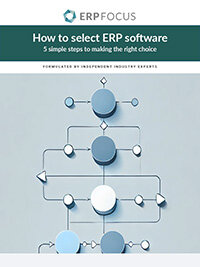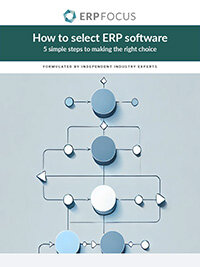ERP Change: The Secret For Merger Success
One of the quickest and most effective methods for a small business to become a medium sized business, or for a medium sized business to become a large business is by merger or acquisition. Achieving the expected efficiencies and synergies from the combination of two or more companies is always much harder to do in real life than it was envisioned in the comfort of a conference room. Once the agreement in principle is reached to move forward, quality thought – not wishful thinking – needs to be devoted to making certain the new entity is one single integrated company, and not two different companies sharing a common logo.
ERP figures heavily into this thinking. By definition, ERP includes the word “enterprise”, so if parts of your company remain on different systems, you cannot legitimately contend that you have an ERP system. Long before any title documents are signed, strategic decisions should have been made about what system the joint organization will standardize around - at least one company will have a crucial reason to change ERP systems. If neither party’s system adequately fulfills all of your needs, then both companies may be forced into changing ERP systems. Do not automatically assume that the system you are using is better for the joint entity than the system your partner is using; just automatically assume you should only use one system.
A Conflict Of Concepts
This is critical because the merged entity will use every argument known to man to stall and resist changing ERP, and “your computer system won’t handle the way we do business” will be milked to its fullest. You will hear that switching ERP systems will double the work load, it will destroy service, it will jeopardize financial integrity – in short, you will hear every desperate half truth that has been used to manage from the bottom since the invention of business. You have to be on your game, because if even one of a hundred turns out to have a basis in practicality, that will be the one you hear about for the next five years. This doesn’t happen because people are bad, or evil, or stupid; it happens because people hate change, and they reject the possibility that the company that bought them might have an equivalent level of talent.
However, even if you do stub your toe with too much change, too quickly, the alternative is worse. This is the situation in which both organizations continue as before, both pretty happy, both operating different systems, both making independent tactical decisions (which they can do since they run independent business support systems), both doing pretty much what they did before the union. People can’t say why, exactly, the expected efficiencies aren’t happening, or why people don’t seem to be working together. Lack of results causes top management to believe someone is sabotaging the integration. The problem isn’t sabotage; the problem is that separate systems ensure that people work separately - resisting ERP change creates a resistance to progress.
Don’t make this mistake. Integrate ERP systems as one of the first steps in a merger or acquisition.
Free white paper

How to Select ERP
Learn to select your ERP in 5 easy steps by following our expert's advice

Related articles
-

A beginner’s guide to ERP integration
What is ERP integration, why it matters, and more!
-

CMMC Compliance: What Aerospace and Defense Manufacturers Need to Know
Key insights on CMMC compliance, deadlines, and securing DoD contracts with CMMC 2.0 certificatio...
-

When is it time to replace a legacy ERP system?
Replacing your legacy ERP system with new software can revitalize your business operations.

